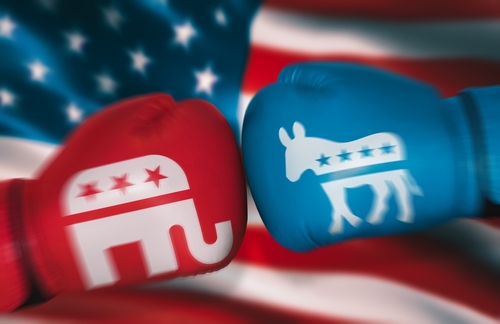
As the political landscape of America continues to evolve, a historian with a remarkable track record for predicting presidential elections has once again stepped into the spotlight. This academic, who has accurately forecasted the outcome of every election since 1984, has developed a system based on 13 key factors that he claims can determine the winner of the presidential race. According to his latest analysis, the model suggests that President Joe Biden is leading as we approach the 2024 election.
The historian’s prediction model is an intriguing blend of political science and historical analysis. It considers a wide array of indicators ranging from economic performance and social unrest to the charisma of candidates and the incumbent administration’s foreign policy successes or failures. The model has stood the test of time, correctly calling the victor in elections that have seen America through some of its most turbulent times.
Allan Lichtman is crazy! This will be an election where he is wrong! Times have changed and nothing is normal right now!
Historian who correctly predicted almost every election winner since 1984 reveals who is likely to win in 2024 | Fox News https://t.co/GPH7TOlmFI
— Paula ksm (@paulaksm47) February 7, 2024
However, as we look ahead to the 2024 election, it’s worth considering the unique challenges that may put this model to the test. The political climate in the United States has become increasingly polarized, with issues such as the economy, national security, and cultural divisions taking center stage. These are not ordinary times, and the upcoming election could be influenced by factors that are difficult to quantify or predict.
Critics of predictive models argue that they can’t account for the unpredictable nature of politics and the human element that often defies logical patterns. While historical data can provide valuable insights, they caution against placing too much reliance on any single method of forecasting. After all, elections are ultimately decided by the people, and public opinion can shift rapidly in response to current events.
Historian who correctly predicted almost every election winner since 1984 reveals who is likely to win in 2024 https://t.co/mPWzdDRbfF pic.twitter.com/jH9oCycfgw
— New York Post (@nypost) February 7, 2024
Supporters of the incumbent president might point to the model’s prediction as a sign of Biden’s strength and appeal. However, conservatives are likely to question the model’s ability to capture the full picture, especially given the dynamic and often volatile nature of today’s political environment. They may argue that the model fails to fully account for the grassroots movements and the conservative momentum that could sway the election in unexpected ways.
It’s also important to consider the role of new voters and changing demographics, which have the potential to significantly impact the outcome of the election. As younger generations become more politically active and diverse populations grow in number, their preferences could disrupt traditional voting patterns and challenge the assumptions underlying any predictive model.
Moreover, the model does not operate in a vacuum; external factors such as global events, economic crises, or unforeseen scandals can all play a decisive role in shaping voter sentiment. The resilience of the model will be tested as it confronts these variables, which often arise without warning and can turn the tide of an election overnight.
In conclusion, while the historian’s model presents an interesting perspective on the 2024 presidential election, it is but one tool among many that attempt to gauge the future of American politics. As conservatives and liberals alike watch the campaign unfold, they will be reminded that in the end, it is the will of the people, expressed at the ballot box, that will determine the next leader of the free world. Whether the model can maintain its unbroken streak remains to be seen, but one thing is certain: the race to the White House in 2024 will be closely watched by all.










